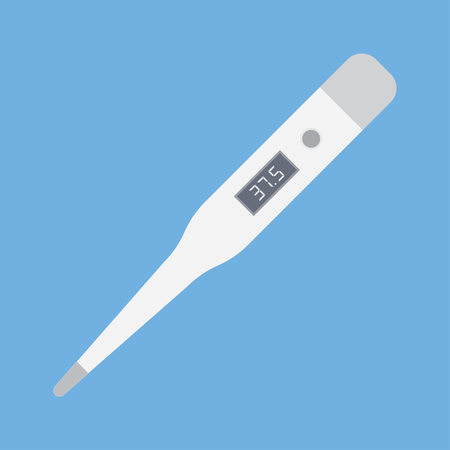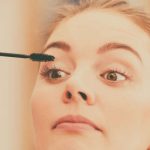1. Why Sunscreen Is Essential for Post-Procedure Skin
After a cosmetic procedure—whether its laser treatment, chemical peels, microneedling, or injectables—your skin becomes more sensitive and vulnerable. One of the most important steps in your recovery routine is protecting that healing skin from sun exposure. Even minimal UV exposure can interfere with results, cause irritation, or lead to long-term pigmentation issues.
How Sun Exposure Affects Healing Skin
Your skin acts as a natural barrier, but after cosmetic treatments, that barrier is temporarily weakened. When UV rays hit healing skin, they can trigger inflammation, dark spots (post-inflammatory hyperpigmentation), redness, and even scarring. In some cases, it may reverse the benefits of your treatment entirely.
Common Risks of Sun Exposure After Cosmetic Procedures
| Risk | Description |
|---|---|
| Hyperpigmentation | Sunlight can cause dark patches on healing areas, especially in patients with medium to dark skin tones. |
| Prolonged Redness | UV exposure may worsen redness and delay your skin’s return to normal tone. |
| Scarring | Exposing fresh wounds or treated areas to the sun increases the risk of permanent scarring. |
| Irritation and Sensitivity | Sensitized skin is more likely to react negatively to UV rays, causing discomfort and delayed healing. |
Why Daily Sunscreen Use Matters During Recovery
You might think staying indoors is enough, but UV rays can penetrate windows and reflect off surfaces like sidewalks or water. That’s why dermatologists and aesthetic providers in the U.S. recommend daily sunscreen use—even on cloudy days or while indoors post-procedure.
Key Takeaway:
If you’ve invested time and money into a cosmetic procedure, sunscreen is your best friend during the recovery phase. It helps preserve results, prevents complications, and keeps your skin safe while it heals. In the next section, we’ll go over what features to look for when choosing a post-procedure sunscreen.
2. Key Ingredients to Look for in Post-Procedure Sunscreens
After a cosmetic procedure, your skin is more sensitive and vulnerable to damage from the sun. Choosing the right sunscreen can make a big difference in how well and how quickly your skin heals. Not all sunscreens are created equal—some ingredients can be too harsh on healing skin. Thats why its essential to focus on gentle yet effective ingredients that offer strong protection without causing irritation.
Mineral vs. Chemical Sunscreens
There are two main types of sunscreens: mineral (also known as physical) and chemical. For post-procedure care, dermatologists often recommend mineral sunscreens because they sit on top of the skin and reflect UV rays, rather than being absorbed into the skin like chemical sunscreens. This makes them less likely to cause irritation or allergic reactions.
Top Mineral Ingredients to Look For:
| Ingredient | Benefits | Why It’s Good for Healing Skin |
|---|---|---|
| Zinc Oxide | Offers broad-spectrum protection against UVA and UVB rays | Gentle, anti-inflammatory, and non-comedogenic; ideal for sensitive or compromised skin |
| Titanium Dioxide | Provides strong UVB protection with some UVA coverage | Non-irritating and safe for use immediately after procedures like laser treatments or chemical peels |
Other Soothing Ingredients to Consider
Besides sun-blocking minerals, look for sunscreens that include calming and hydrating ingredients to support the healing process:
- Aloe Vera: Known for its soothing and cooling effects, aloe vera helps reduce redness and inflammation.
- Niacinamide (Vitamin B3): Helps strengthen the skin barrier and reduce irritation.
- Hyaluronic Acid: Keeps the skin hydrated without clogging pores or causing sensitivity.
- Panthenol (Vitamin B5): A gentle moisturizer that promotes skin regeneration and healing.
Avoid These Common Irritants:
When your skin is in recovery mode, it’s best to avoid certain ingredients that may delay healing or trigger discomfort:
- Fragrance: Can cause allergic reactions or stinging on sensitive skin.
- Alcohol: May dry out or irritate healing tissue.
- Chemical filters like oxybenzone or avobenzone: These can sometimes lead to sensitivity or allergic reactions in post-procedure skin.
Selecting a sunscreen with the right blend of protective and soothing ingredients ensures that your skin stays safe while it recovers beautifully from any cosmetic treatment.

3. Best Types of Sunscreens for Healing Skin
After cosmetic procedures like laser treatments, chemical peels, or microneedling, your skin becomes more sensitive and vulnerable to sun damage. Choosing the right sunscreen is crucial to help protect and heal your skin without causing irritation. Let’s break down the different types of sunscreens and which are best suited for post-procedure care.
Mineral vs. Chemical Sunscreens
There are two main types of sunscreens: mineral (also known as physical) and chemical. Each has its pros and cons, especially when it comes to healing skin.
| Type | How It Works | Best For | Common Ingredients |
|---|---|---|---|
| Mineral Sunscreens | Sits on top of the skin and reflects UV rays | Sensitive or healing skin | Zinc oxide, titanium dioxide |
| Chemical Sunscreens | Absorbs UV rays and converts them into heat | Everyday use on non-compromised skin | Avobenzone, oxybenzone, octinoxate |
If you’ve recently had a cosmetic procedure, mineral sunscreens are usually the safest option. They’re less likely to irritate sensitive skin and start working immediately after application.
Tinted vs. Non-Tinted Formulas
Tinted sunscreens can offer extra benefits during recovery. Many tinted formulas contain iron oxides, which help block visible light—a type of light that can also contribute to pigmentation issues, especially after procedures that target dark spots or melasma.
| Type | Main Benefit | Recommended For |
|---|---|---|
| Tinted Sunscreen | Adds protection from visible light; evens out skin tone | Post-laser treatments, hyperpigmentation concerns |
| Non-Tinted Sunscreen | No added color; simple protection from UVA/UVB rays | Sensitive or redness-prone skin where tint might not match well |
The Ideal Formula for Healing Skin:
- Broad-spectrum protection: Shields against both UVA and UVB rays.
- Zinc oxide-based: Gentle and effective for compromised skin.
- Tinted (optional): Great for added visible light protection.
- No fragrance or alcohol: Reduces risk of irritation.
Your skin is in recovery mode after a cosmetic procedure, so treat it gently. Opting for a mineral-based sunscreen with healing-friendly ingredients will help protect your investment—and your glow.
4. Top Dermatologist-Recommended Sunscreens
After undergoing cosmetic treatments like chemical peels, laser resurfacing, or microneedling, your skin becomes more sensitive and vulnerable to UV damage. Choosing the right sunscreen is crucial for proper healing and to prevent complications like hyperpigmentation or scarring. Below is a curated list of dermatologist-recommended sunscreens that offer gentle yet effective protection for healing skin.
What to Look For in a Post-Procedure Sunscreen
- Broad-Spectrum Protection: Blocks both UVA and UVB rays.
- Mineral-Based Formulas: Ingredients like zinc oxide and titanium dioxide are less irritating.
- Fragrance-Free & Non-Comedogenic: Reduces risk of irritation and breakouts.
- SPF 30 or Higher: Offers adequate protection during the healing phase.
Top Picks Approved by Dermatologists
| Sunscreen | Main Ingredients | Best For | Why It’s Recommended |
|---|---|---|---|
| EltaMD UV Physical Broad-Spectrum SPF 41 | Zinc Oxide, Titanium Dioxide | Post-laser, Microneedling | Tinted mineral formula, gentle on sensitive skin |
| CeraVe Hydrating Mineral Sunscreen SPF 30 | Zinc Oxide, Ceramides | Dry or irritated skin post-treatment | Hydrating formula supports skin barrier recovery |
| La Roche-Posay Anthelios Mineral SPF 50 | Titanium Dioxide, Antioxidants | Sensitive or red-prone skin after procedures | Lightweight and antioxidant-enriched for extra protection |
| Colorescience Sunforgettable Total Protection Brush-On Shield SPF 50 | Zinc Oxide, Iron Oxides | Touch-ups on the go post-treatment | Powder format great for reapplication without touching healing skin |
| Avene Mineral Sunscreen Fluid SPF 50+ | Zinc Oxide, Thermal Spring Water | Easily irritated or reactive skin post-peel or laser | Soothe-and-protect formula with anti-inflammatory properties |
Pro Tips for Using Sunscreen After Cosmetic Procedures
- Apply Gently: Use clean hands and pat on sunscreen without rubbing aggressively.
- Avoid Chemical Filters: These can be too harsh on freshly treated skin.
- Reapply Often: Every two hours if youre outdoors—even if its cloudy.
- Add Physical Barriers: Use hats and sunglasses for added protection during recovery.
Selecting a sunscreen that’s approved by dermatologists ensures your healing skin gets the safest and most effective care possible. These products not only protect from sun damage but also support your skin as it recovers from cosmetic procedures.
5. How to Apply and Reapply Sunscreen Properly After a Procedure
After a cosmetic procedure, your skin is more sensitive and vulnerable to UV damage. Applying sunscreen correctly is just as important as choosing the right product. Here are some easy-to-follow tips to help you protect your healing skin.
Tips for Gentle Application
When your skin is healing, it’s important to be extra gentle. Avoid rubbing or pulling on the treated area. Heres how to apply sunscreen safely:
| Step | What to Do |
|---|---|
| 1. Cleanse Gently | Use a mild, fragrance-free cleanser before applying sunscreen. Pat dry with a soft towel. |
| 2. Wait if Needed | If your doctor advised waiting a few days before applying products, follow that advice closely. |
| 3. Use Clean Hands | Always wash your hands before touching your face or applying any product. |
| 4. Dab, Don’t Rub | Gently dab sunscreen onto the skin using your fingertips. Spread it softly without pressure. |
| 5. Let It Settle | Give the sunscreen a few minutes to absorb before applying makeup or going outdoors. |
How Often Should You Reapply?
Sunscreen doesn’t last all day—especially if you’re outdoors or sweating. Healing skin may need even more consistent protection.
Reapplication Guidelines:
- Every 2 hours: If youre outside, reapply every two hours for continued protection.
- After sweating or wiping: If youve been sweating or have gently wiped your face, reapply sunscreen immediately.
- If staying indoors: Even if youre inside near windows, reapply every 4–6 hours for best results.
Pro Tip:
Consider using a mineral-based sunscreen in powder form for touch-ups during the day—it’s lightweight, non-irritating, and easy to apply over makeup or other skincare products.
Your post-procedure skin deserves the best care possible. Applying and reapplying sunscreen properly helps ensure smooth healing and protects against unwanted pigmentation and damage from UV rays.
